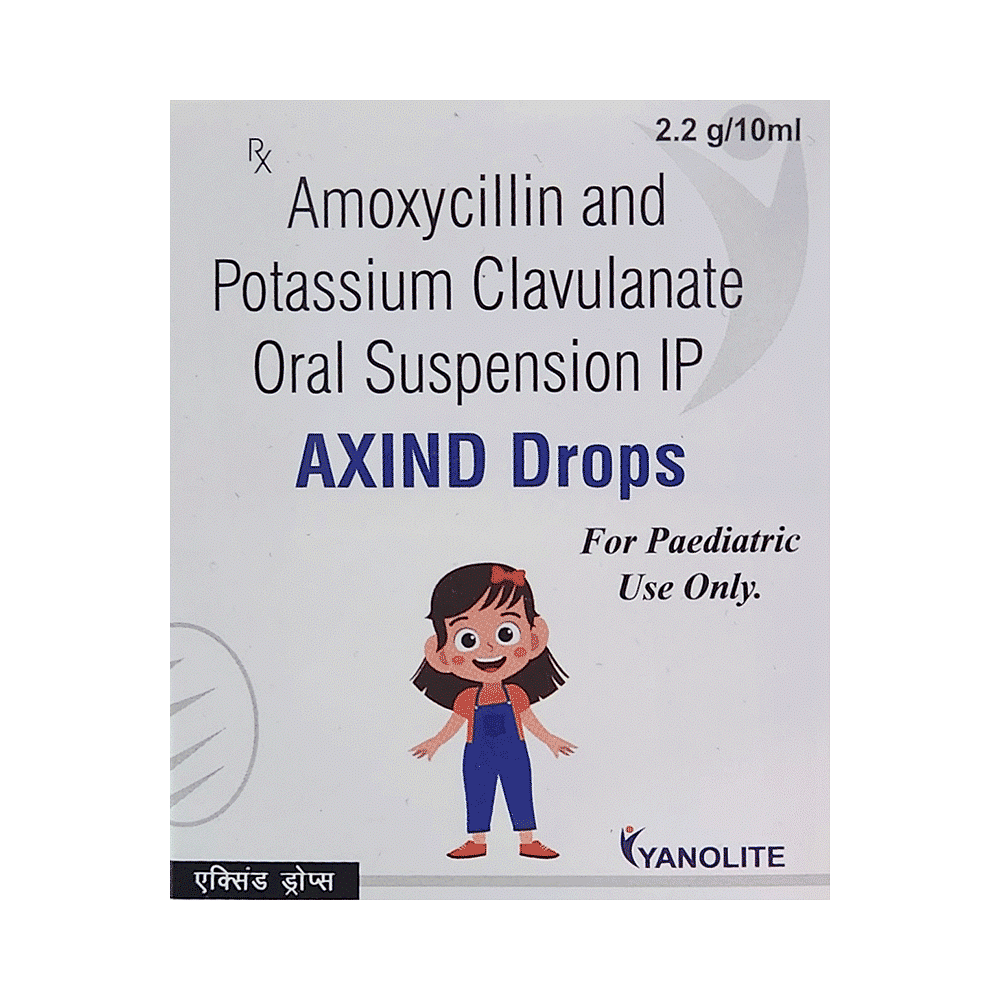
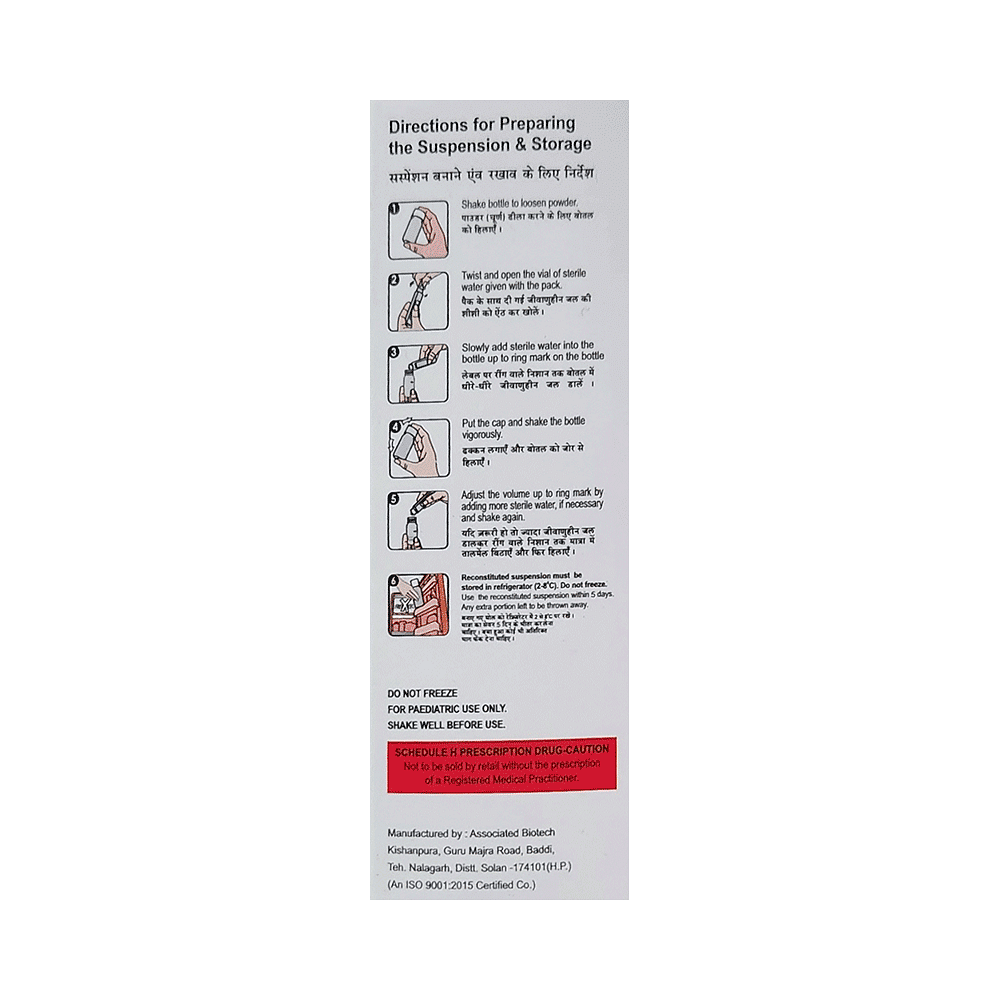
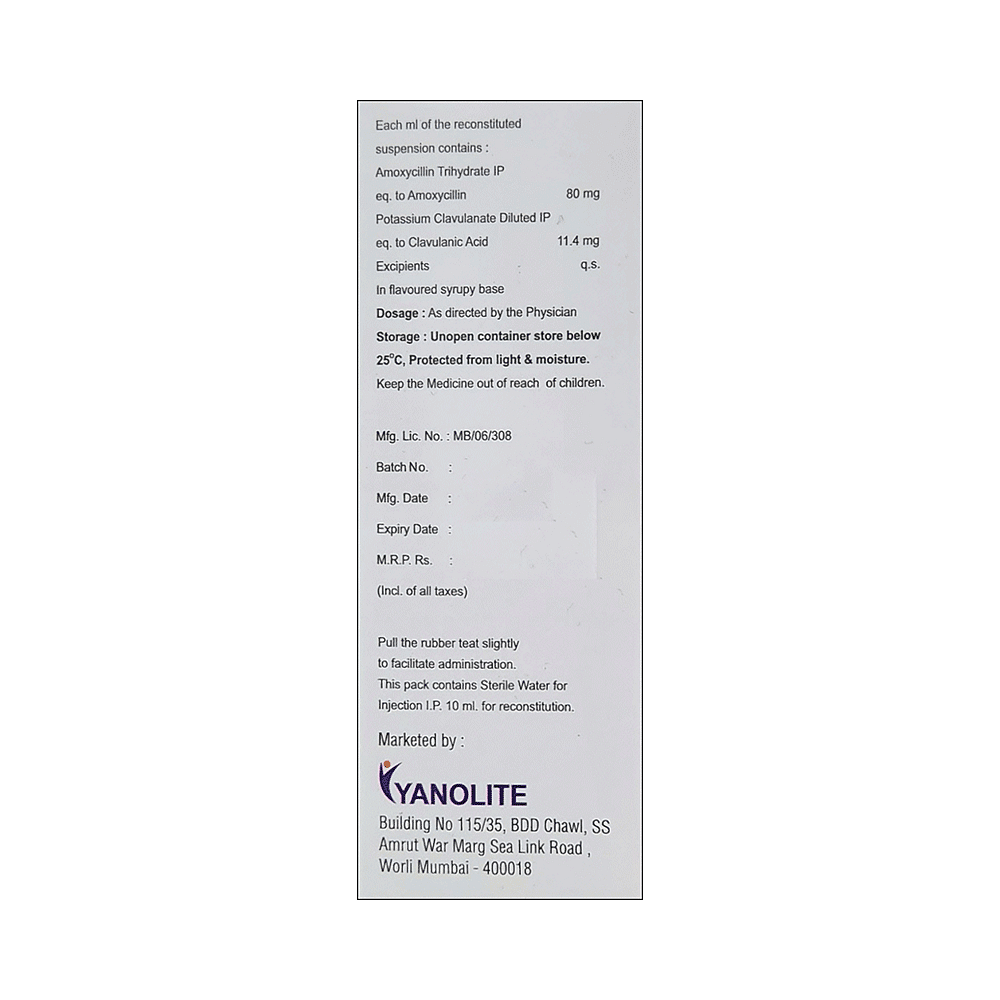
Axind Drop
Manufacturer
Yanolite Pharma Pvt Ltd
Salt Composition
Amoxycillin (80mg) + Clavulanic Acid (11.4mg)
Key Information
Short Description
Axind Drop is an antibiotic medicine that helps treat bacterial infections of the ear, nose, throat, chest, lungs, teeth, skin, and urinary tract.
Dosage Form
Oral Suspension
Introduction
Axind Drop is an antibiotic medicine that helps treat bacterial infections of the ear, nose, throat, chest, lungs, teeth, skin, and urinary tract. It is capable of killing bacteria that have become resistant to other therapies. You can give Axind Drop to your child with or without food. It is better to give it with food as that helps increase absorption and decrease the risk of stomach upset. The doctor may prescribe giving it two to three times a day. Medicine dose depends on the severity of the infection, its type, and your child’s body weight and age. So, stick to the dose, time, and way prescribed. If your child vomits the medicine within 30 minutes of intake, let the child calm down and repeat the dose. Do not double dose if it's the time for the next dose.
Directions for Use
Take this medicine in the dose and duration as advised by your doctor. Check the label for directions before use. Measure it with a measuring cup and take it by mouth. Shake well before use. Axind Drop is to be taken with food.
Safety Information
Side Effects
vomiting diarrhea nausea
Alcohol Warning
It is not known whether it is safe to consume alcohol with Axind Drop. Please consult your doctor.
Breastfeeding Warning
Axind Drop is safe to use during breastfeeding. Human studies suggest that the drug does not pass into the breastmilk in a significant amount and is not harmful to the baby.
Pregnancy Warning
Axind Drop is generally considered safe to use during pregnancy. Animal studies have shown low or no adverse effects to the developing baby; however, there are limited human studies.
How it works
Axind Drop is an antibiotic. It has two active agents, amoxycillin and clavulanic acid. Amoxycillin works by preventing the formation of the bacterial protective covering (cell wall) essential for the survival of the bacteria. Whereas, clavulanic acid serves a special purpose of inhibiting an enzyme (beta-lactamase) that is produced by resistant bacteria. This makes the combination of amoxycillin and clavulanic acid an effective line of treatment for many types of infections.
Quick Tips
Your child must complete the entire course of antibiotics. Stopping too soon may cause the bacteria to multiply again or cause another infection. Encourage your child to drink plenty of water in case diarrhea develops as a side effect. Never give Axind Drop until and unless prescribed by the doctor. Do not give Axind Drop to treat common cold and flu-like symptoms caused by viruses. Check 'expiry' before giving Axind Drop to your child. Immediately discard all the expired medicines.
Related Medicines
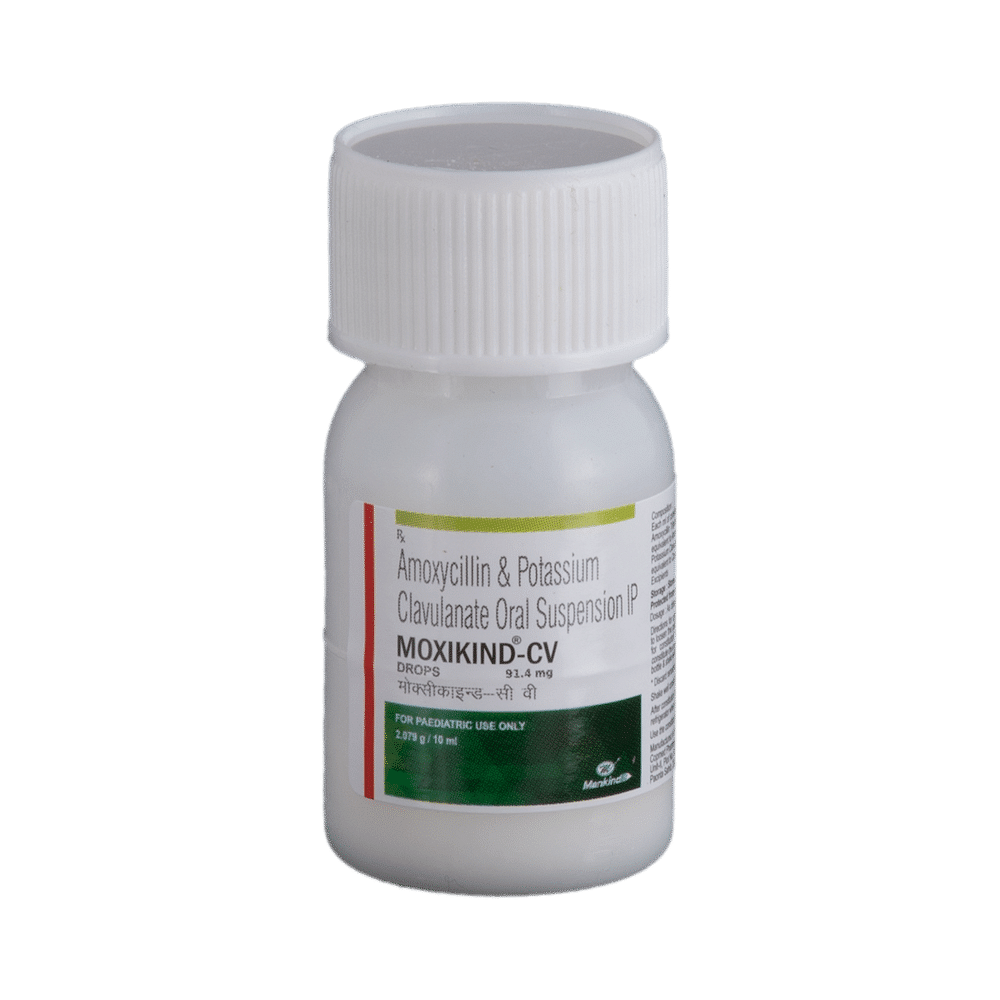
Moxikind-CV Drop

Bactoclav Drops

Cavmox-CV Drop

Vaxclave Dry Syrup Vanilla
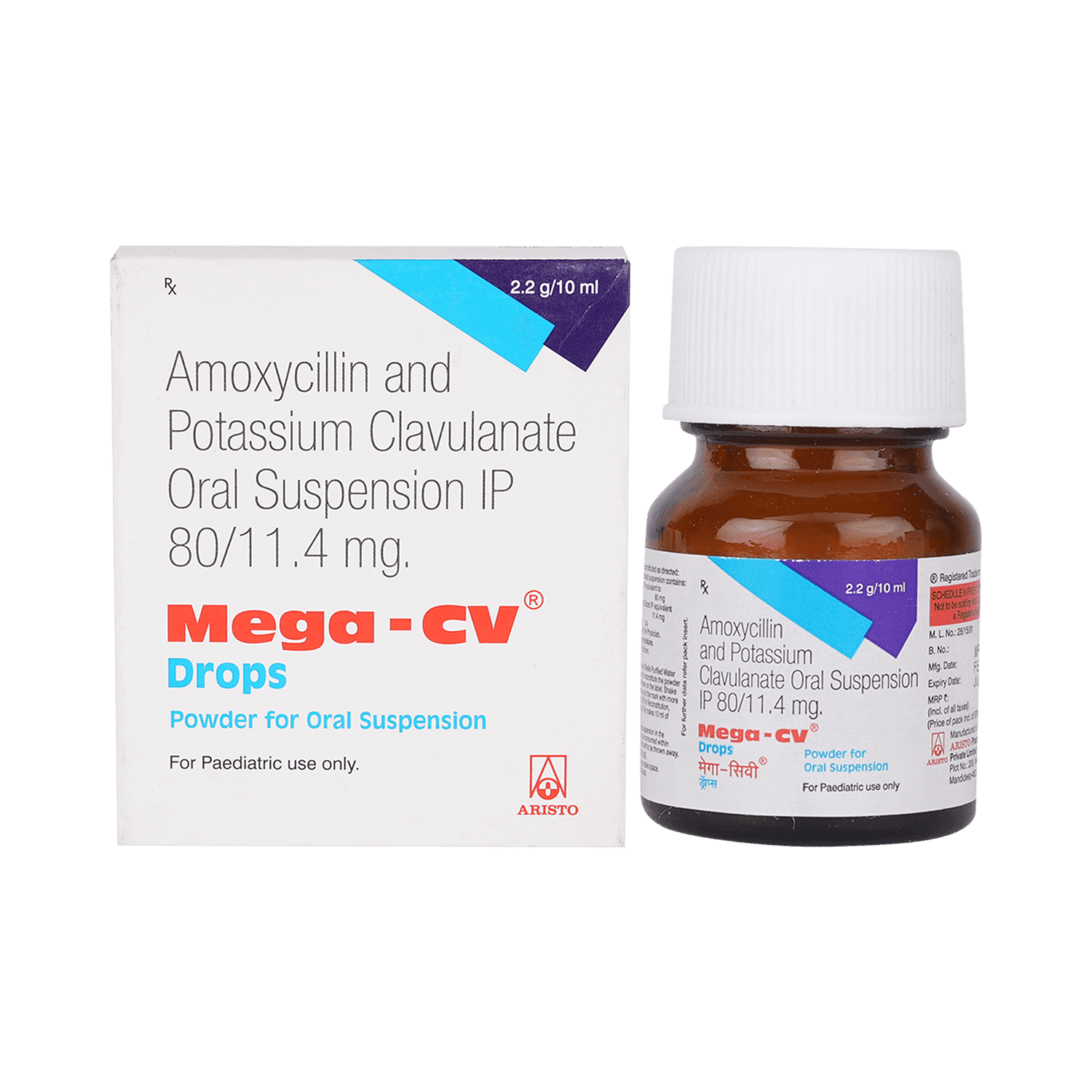
Mega-CV Drops

Delpoclav Oral Suspension

Todclav CV Oral Suspension

Clavucillin Nano Drop
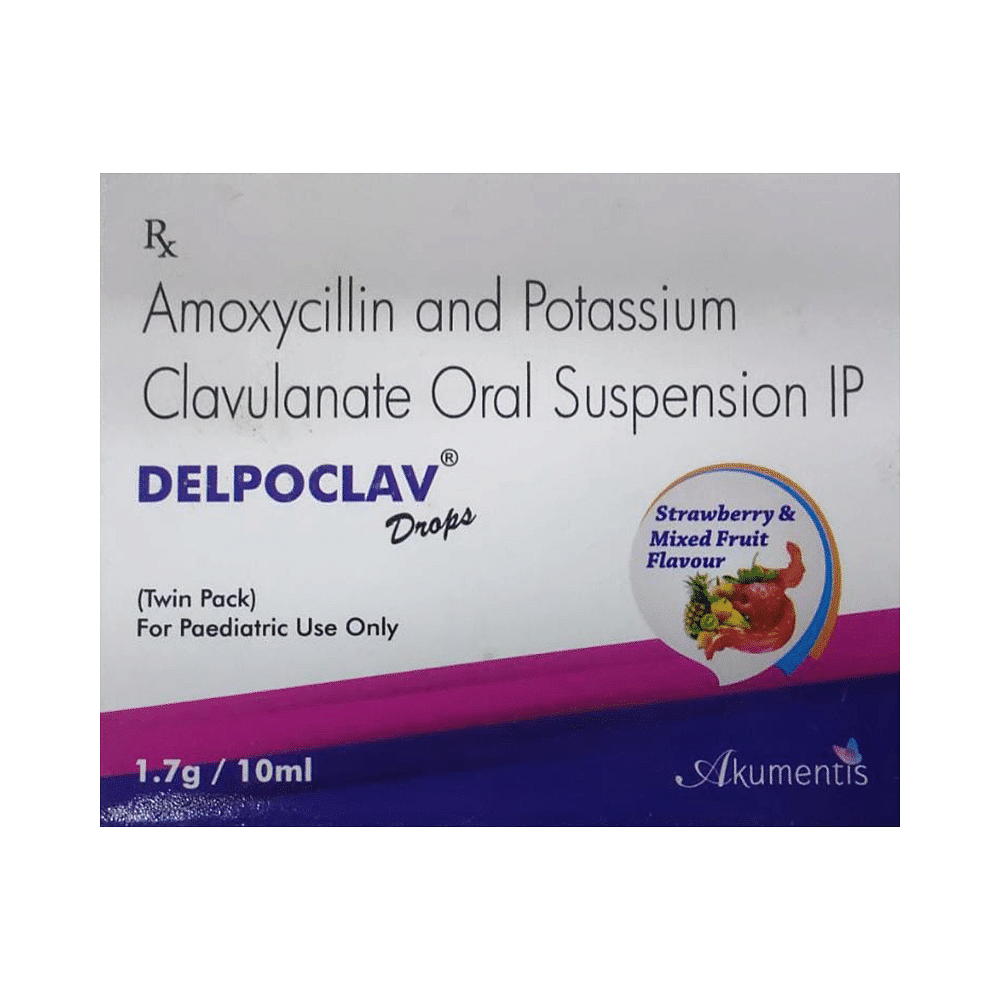
Delpoclav Oral Drop Strawberry & Mixed Fruit
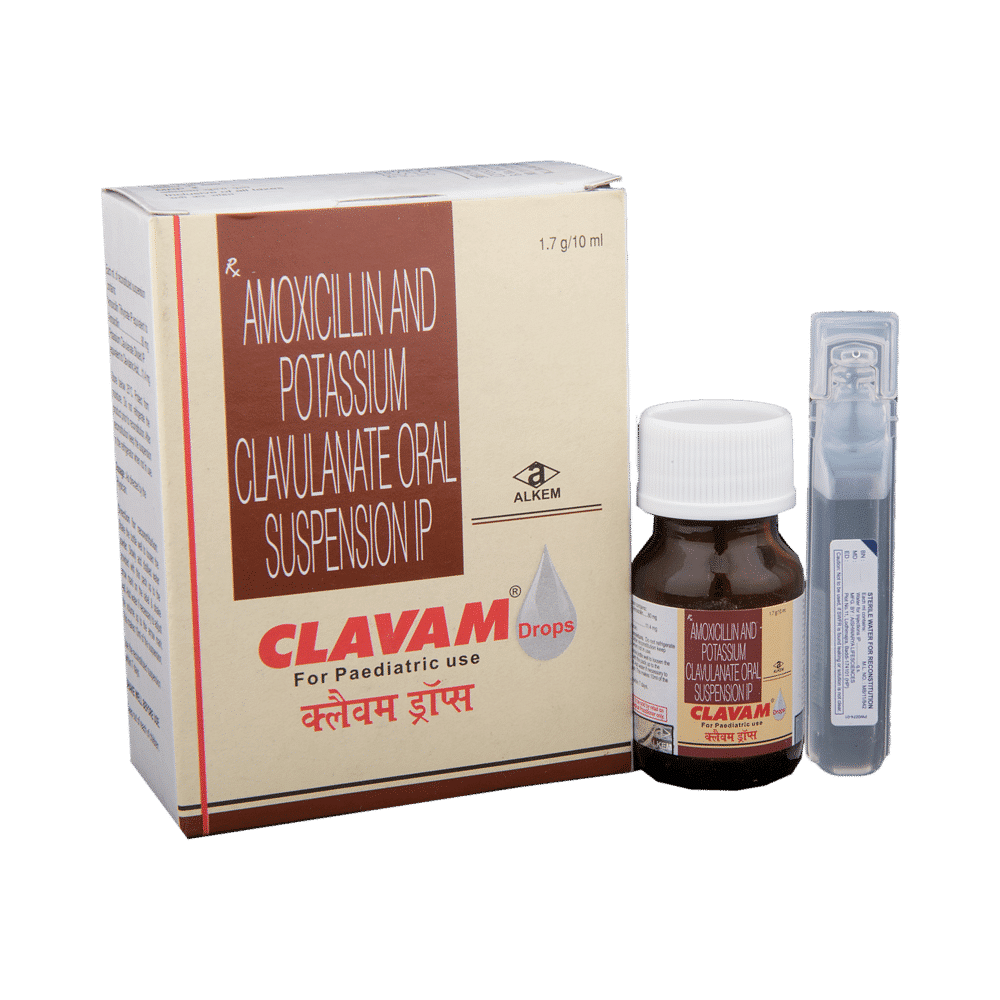
Clavam Paediatric Oral Suspension
Frequently asked questions
Can other medicines be given at the same time as Axind Drop?
It's essential to inform your child's doctor about any other medications they're taking before starting Axind Drop. Additionally, consult with their doctor before administering any medication to your child.
Can I get my child vaccinated while on treatment with Axind Drop?
Generally, antibiotics do not interfere with vaccine ingredients or cause adverse reactions in children who have just been vaccinated. However, it's recommended to wait until the child has recovered from their illness before getting vaccinated.
Which lab tests may my child undergo while taking Axind Drop on a long-term basis?
Regular monitoring of kidney and liver function tests may be required during prolonged therapy to ensure your child's condition remains stable.
Can I give a higher than the recommended dose of Axind Drop to my child?
No, administering a higher dose than recommended can increase the risk of side effects. If symptoms worsen, consult with your child's doctor for re-evaluation.
Can I stop giving Axind Drop to my child when the symptoms are relieved?
Continue giving the medicine for the full course of treatment, even if symptoms improve before completion. This ensures the infection is fully cured and the beneficial effects of the medication persist.
Can the use of Axind Drop cause diarrhea?
Yes, Axind Drop may cause diarrhea as it kills harmful bacteria while also affecting helpful bacteria in the stomach. Encourage your child to drink plenty of water or other fluids if diarrhea occurs. Consult with a doctor if symptoms persist and signs of dehydration are noticed.
Do all viral common colds result in secondary bacterial infection?
Mostly, bacterial infections do not follow viral infections. Using antibiotics in viral infections can increase the risk of side effects, so consult with your child's doctor before administering medication.
The mucus coming out of my child’s nose is yellow-green. Is it a sign of a bacterial infection?
Yellow or green mucus does not necessarily indicate the need for antibiotics. During a common cold, it's normal for mucus to thicken and change color; symptoms often last 7-10 days.
Is there any sign which shows that my child needs immediate medical attention?
Call your child's doctor immediately if they experience serious allergic reactions (breathing problems, skin rashes), gastrointestinal infections (diarrhea), or liver damage (weakness, paleness, vomiting). These side effects are rare but require expert attention.


